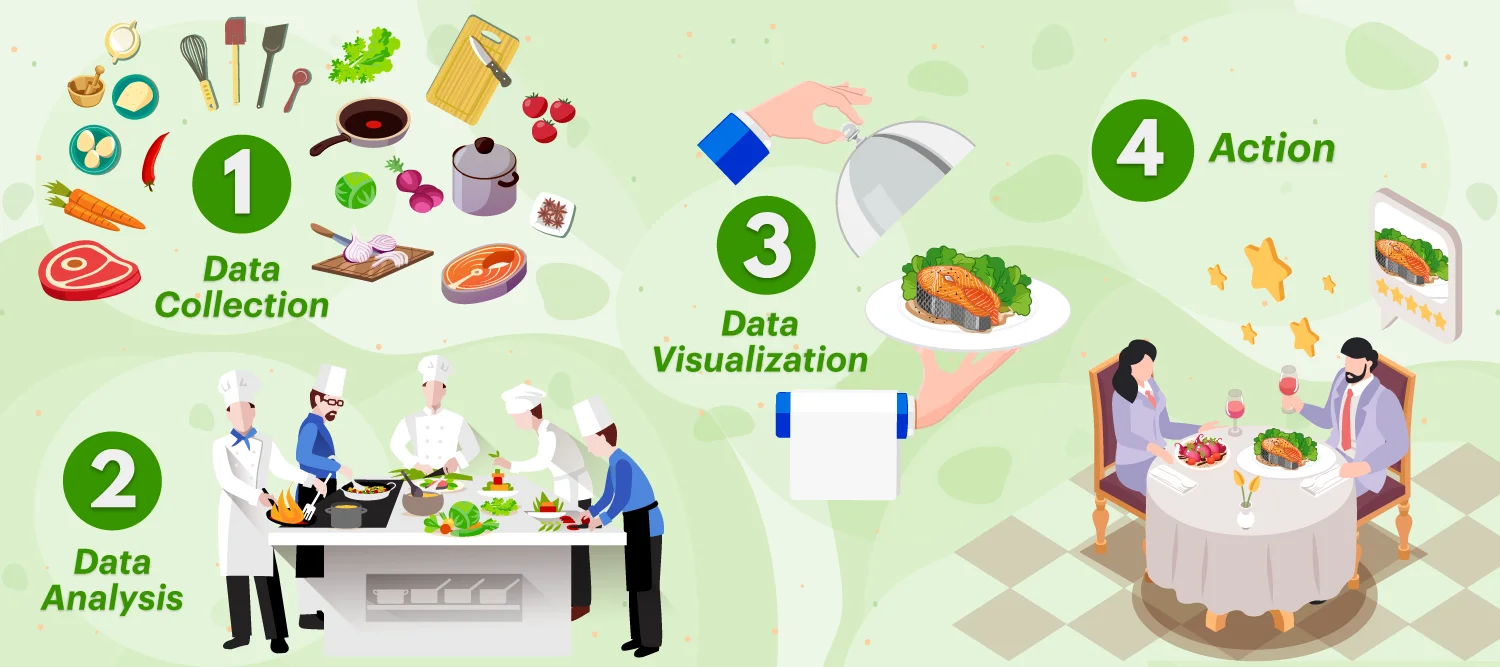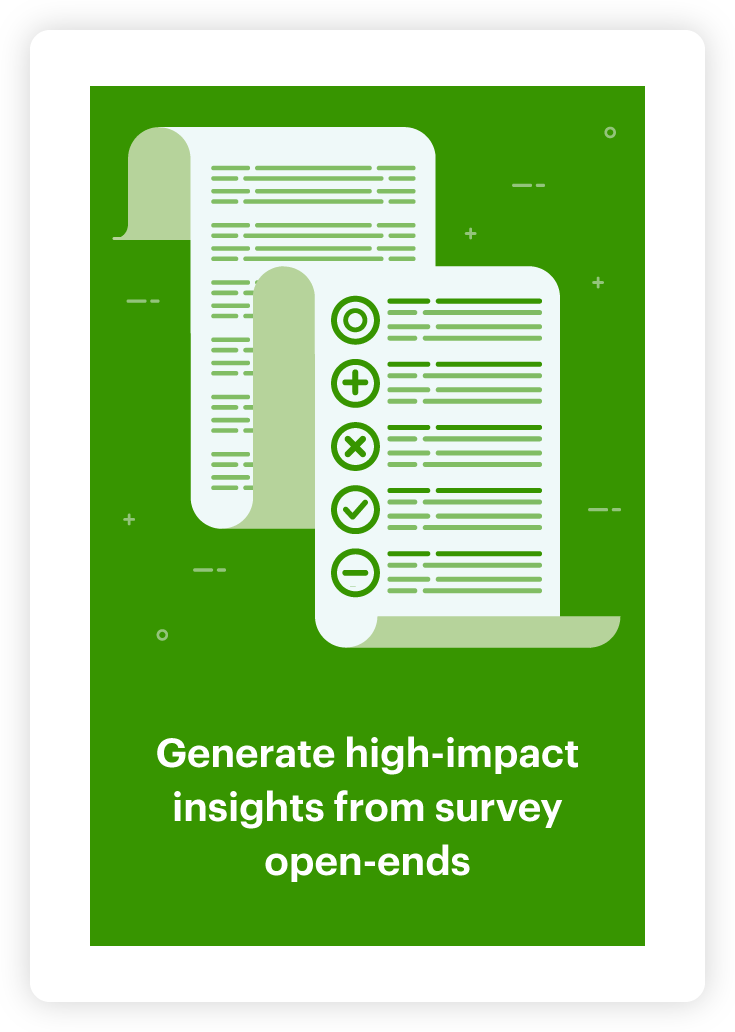Building an analysis process to serve up a great dining experience

Restaurants must be customer focused. While all brands will say customers are their number one priority, operators in the restaurant industry really need to mean it.
The range of choices available to customers means one bad experience is enough to drive them elsewhere. Loyalty must be earned; every interaction must delight.
Therefore, a robust customer experience analysis program is a must for any restaurant. Identifying and addressing diners’ needs and resolving any issues is the difference between profitability and making losses.
What does a robust dining experience program look like? At Relative Insight we work with a variety of restaurants. Each customer has their own way of doing things, but they all run guest experience programs that can be summarized in four steps: data collection, data analysis, data visualization, and action.
A big shift I’ve witnessed is how our customers have embraced using artificial intelligence to augment the first three steps of this process (less so step four, with decision making still the preserve of humans).
Getting customers to share their dining experience
It’s rare for restaurants not to encourage diners to leave feedback on their experience. When I’ve spoken to restaurant CX teams, there are two areas of pain when it comes to data collection.
The first is incentivizing customers to provide feedback. A QR code on the bill or a receipt is rarely going to be enough to prompt diners to review their meal.
Unfortunately, the only time this is likely to be sufficient is when they’re extremely unhappy and want to vent about their poor experience. While this is valuable information, so you can correct any issues, it can skew feedback and any metrics to be unrepresentatively negative.
Similarly, asking guests to leave positive feedback about their great experience is beneficial for you to know, but it can paint a distorted picture of what’s actually happening in a franchise or region.
The goal for restaurant CX teams is to capture the views of all diners – not just those in the two extremes. Understanding why customers were generally satisfied but had an issue with speed of service, or dissatisfied but thought the staff were as helpful as possible, tells you a lot more about the incremental changes you can make to improve guest experience.
The second area where restaurant CX teams can enhance their data collection is expanding the opportunity for open-ended feedback.
This is down to historic industry norms, rather than one of competence. It’s traditionally been easier to decipher quantitative responses, while making sense of free-text responses has been a very manual and time-consuming process.
Advances in technology, namely AI-powered software, have made analyzing open-ended responses a lot quicker and easier. Therefore, there’s no reason why you shouldn’t offer customers more opportunities to leave open-ended responses.
After all, it’s these answers that tell you why diners are giving you good/poor overall satisfaction ratings (OSAT).
Building open-end analysis into your program
At present, step two of your CX program is likely focused on quantitative metrics. What is our OSAT score? Is it rising, falling, or remaining stable?
The next logical step in this line of questioning is: “Why is our OSAT score increasing or decreasing?” This is almost impossible to find out using quantitative metrics and closed survey questions.
For the open ends you do have in your survey, your analysis likely takes one of two forms.
The first is using a word cloud generated by your survey collection tool. This is quick and easy, but does the fact that diners use the word “food” frequently really tell you anything you or your stakeholders can act on?
Option number two is to manually code and analyze responses. This is more rigorous and will tell you why diners are scoring their experience in a certain way.
Speed is the challenge here. One issue not rectified at a restaurant can lead customers to decide “never again”.
In the fast-moving restaurant industry, where the biggest sites seat thousands of diners every day, you need to identify and fix issues ASAP. That’s impossible to do when you’re analyzing feedback manually.
Thankfully, the rise of AI text analysis software has created a third, better way that combines speed and rigor.
Getting reporting right
You’ve collected dining experience feedback and analyzed it properly. The next step is to present it to stakeholders in a way that drives action.
Your organization will have existing reporting processes and dashboards. Ensuring your findings are included within them is a prerequisite for action. If your work isn’t included, then the chance of stakeholders acting on your insights is zero.
Getting into organizational reports is half the battle. The other half is developing defendable conclusions that compel action. This means building metrics, evidence and audit.
You’re not going to drive action without metrics to back up your point. These need to be clear and tie into your brand’s goals.
For example, your OSAT score has recently fallen. In this period, survey responses from guests in a particular region talk about “shortages” 7.2x more. You can highlight to stakeholders that supply problems are creating a fall in guest experience, enabling immediate corrective action.
It’s the same with evidence. You need to share verbatim examples where diners have cited the issues you’ve identified. Verbatim customer feedback is a powerful way of grasping stakeholders’ attention.
Showing your workings is also vital when pushing decision makers to act. Having an audit trail means they can see how you’ve reached your conclusions — and trust your judgement.
As AI becomes more prevalent, audit is increasingly important. AI-powered software that acts as a black box doesn’t offer an audit trail, meaning decision makers will be less inclined to act on recommendations derived from this type of tool.
Effecting change in customers’ dining experience
Implementing your insights is the crucial step, but the hardest to execute.
To get decision makers to act, you must:
- Collect open-ended customer feedback
- Analyze it efficiently and rigorously
- Demonstrate how your recommendations will positively impact dining experience
This 4-step framework, allied with the use of AI, will improve the intelligence you gather from CX feedback and maximize your chances of decision makers executing your recommendations.
Want to know more about using AI-powered technology to enhance your guest experience program? Download my latest report.
